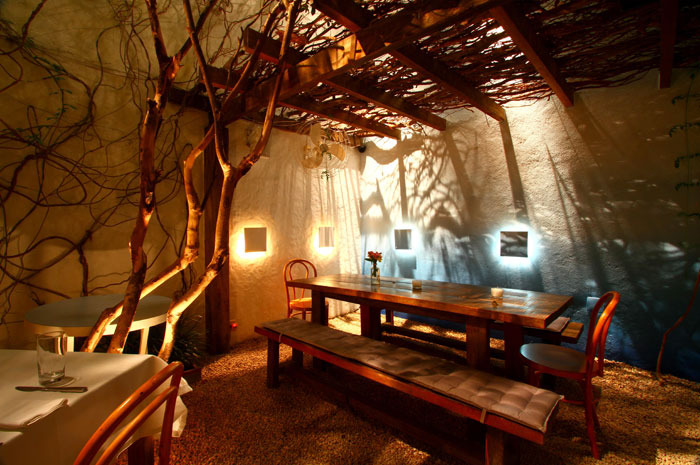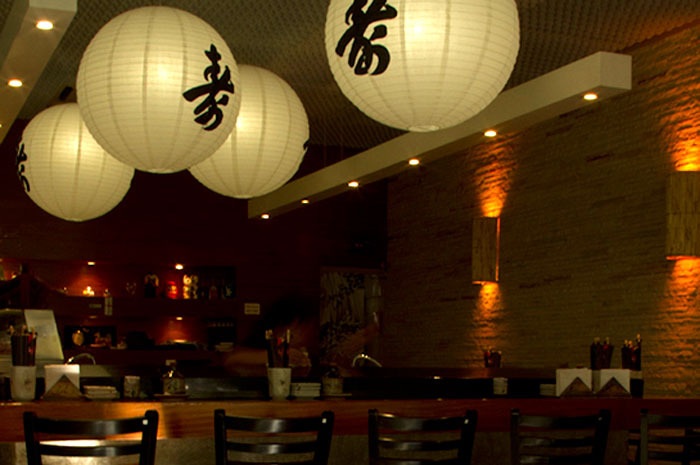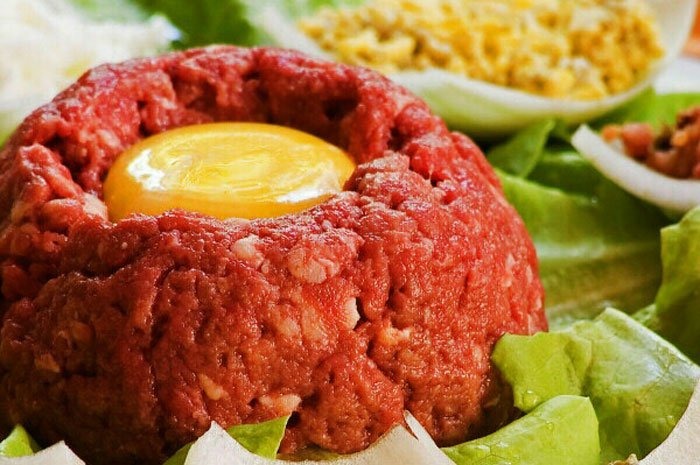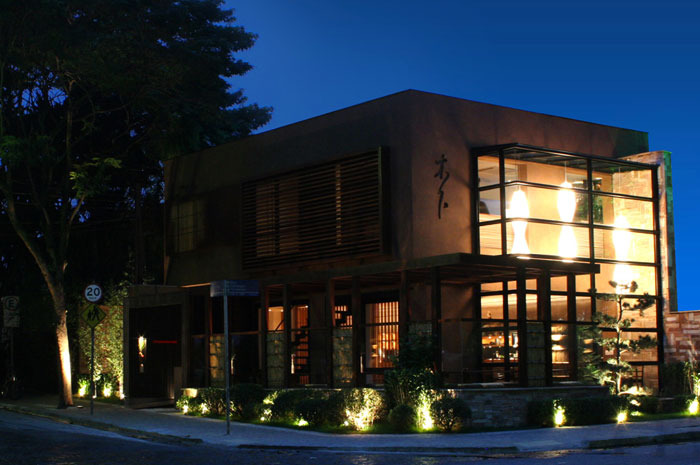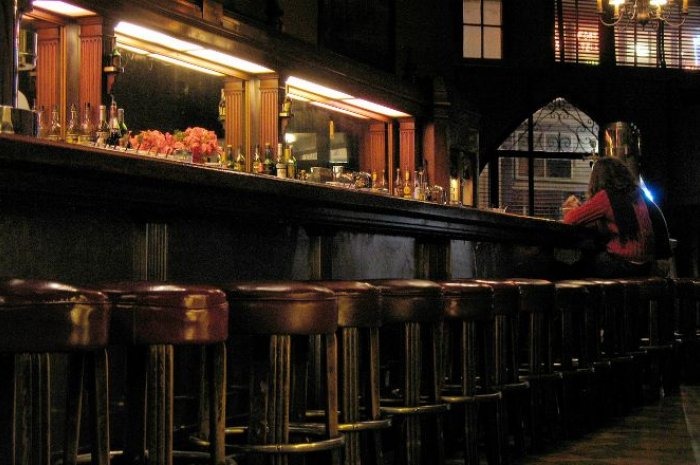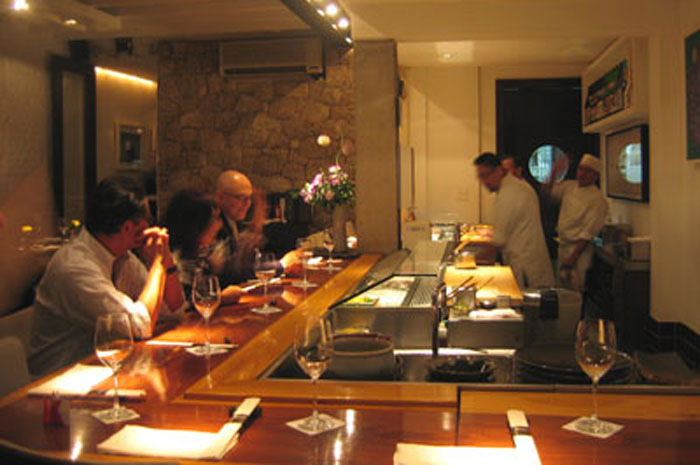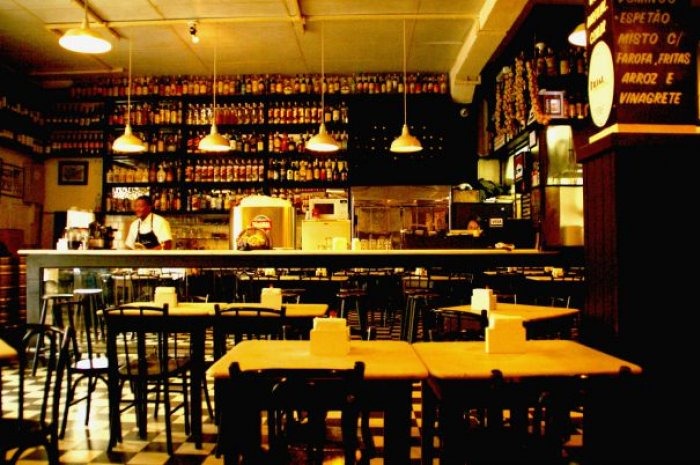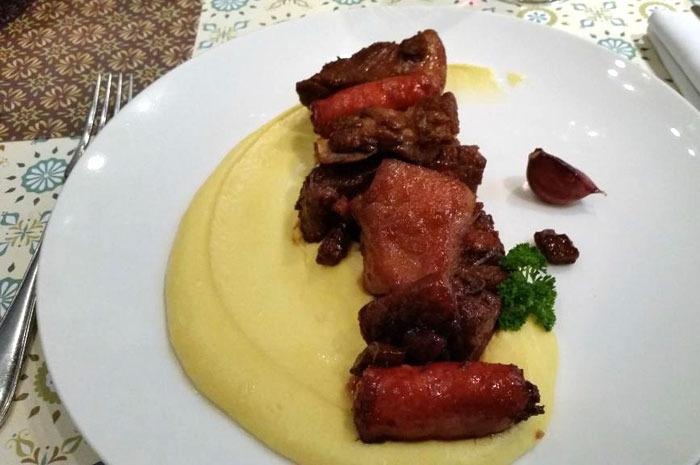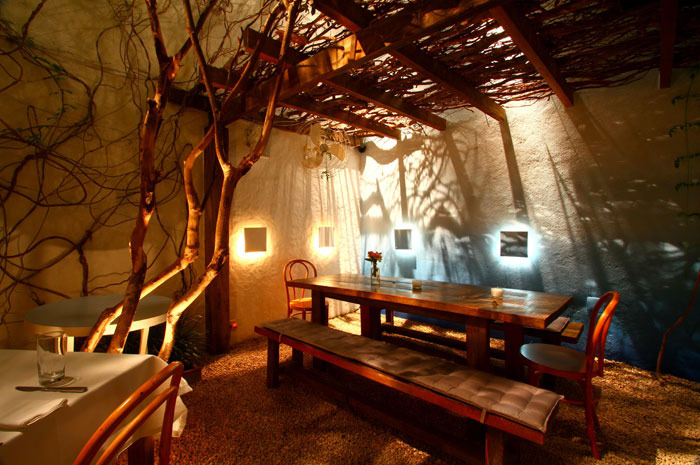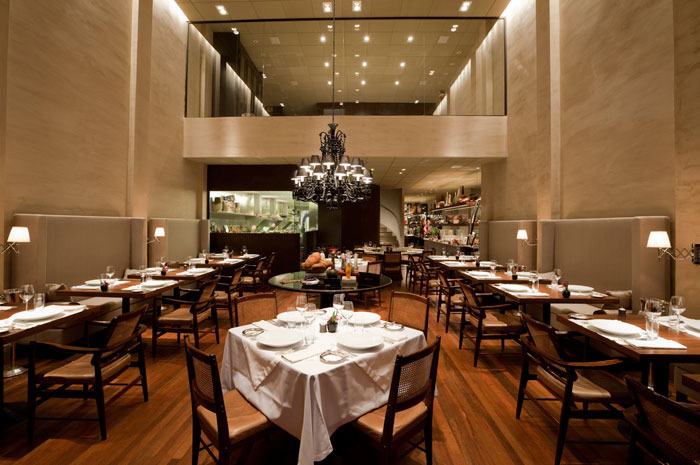10 Best Restaurants In Brazil
Get a head start on your Olympic adventures by learning about the country's best restaurants.
#10 Sushi Hiroshi (São Paulo)
This two-floored, 100-seat restaurant located on a quiet street in São Paulo is easy to miss. Sushi Hiroshi is locally considered a must-visit restaurant for sushi in the city, which has a huge Japanese population. The atmosphere is warm and friendly, the service exceptional, and the dishes well-prepared and creative. On the menu is a variety of sushi and sashimi, some that stray from the more traditional side of Japanese cuisine, with house favorites including sushi ebiten, or nigiri breaded shrimp with sweet and sour sauce and mayonnaise; sushi ciro, with salmon, green onions, and breaded shrimp; and the Romeo, made with tuna or salmon in sesame crust, fried cabbage, and pepper jelly.
#9 Esplanada Grill (Rio de Janeiro)
Esplanada Grill is a traditional churrascaria that has kept diners coming back to the Ipanema area of Rio for more than 20 years. The restaurant is small, with tables situated close together, but it has a lively atmosphere to match its terrific offerings. The portions sizes at Esplanada are hearty, so be sure to bring your appetite. On the menu are starters including typical pastéis, cod fritters, smoked sausage, lamb spare ribs, and chicken hearts. For your entrée, tuck into the incredible selection of quality meats — there are more than 30 kinds of cuts on offer — from the grill, especially its picanha (rump cap). Also from the grill are lamb rump, pork tenderloin, ostrich, salmon, and shrimp, among many other dishes to suit a variety of palates. Side dishes might include fried palm hearts, seasoned rice, and a choice of fried, baked, or sautéed potatoes.
#8 Kinoshita (São Paulo)
Toshio Kinoshita started his eponymous restaurant in Liberdade, the São Paulo district that boasts the largest Japanese community outside Japan itself, more than 30 years ago after having immigrated to Brazil from Hokkaido in the 1960s. It was there that master sushi chef Tsuyoshi Murakami, Kinoshita's son-in-law, perfected his trade, learning how to perfect and tweak with surprising flourishes the kappo cuisine — a style of haute Japanese cooking that aims to marry varying aromas, textures, and ingredients to take diners on a culinary journey as chefs prepare dishes at an open counter — that the restaurant was known for. Kinoshita offers sushi at the highest level in São Paulo, and the menu here is constantly changing based on the freshest catch available. Today, with the restaurant transplanted to south São Paulo's Vila Nova Conceição district, Murakami offers a choice between à la carte and seven- or nine-course tastings, featuring immaculately plated dishes such as grilled scallops with green onions and butter; whitened bean sprouts with pancetta and ponzu sauce; tuna sashimi portobello mushrooms and roe; and a long selection of yakimono, which are grilled or pan-friend dishes, including grilled lamb with teriyaki or ribs marinated in miso and grilled with teriyaki.
#7 Bar do Mineiro (Rio de Janeiro)
On your next trip to Rio (or just as an added excuse to visit one of South America's most popular destinations), set aside some time to visit Bar do Mineiro. This lively Rio joint can be found near the top of the Santa Teresa hill in the center of the city, an area famous for its winding, narrow streets, through which you can meander to work up your appetite. A restaurant as well as a bar, the place serves generous portions of feijão tropeiro (beans with sausage, served over rice), an assortment of pastéis (deep-fried pastries filled with cheeses, beans, and meat) that are considered to be among the city's best, and cachaça (sugar cane spirit). The meatier dishes, including the traditional Minas sausages served with butter-cooked cassava, have also developed a dedicated fan base, making Bar do Mineiro the place to see and be seen in this artsy neighborhood.
#6 Jun Sakamoto (São Paulo)
This city is home to the largest Japanese community outside Japan, so it's quite something for a chef to be singled out as São Paulo's best sushi master, but here, Jun Sakamoto is the king. This discreet restaurant (which Sakamoto designed) seats just 35 people in its long leather banquettes — though for a price, eight patrons can have Sakamoto serve the restaurant's high-quality fish to them directly at the sushi bar. Among the signature dishes here are tartar de atum com foie gras (tuna tartare with foie gras) and vieiras come sal trufado (scallops with truffle salt).
#5 Mocotó (São Paulo)
About a 40-minute drive from the center of São Paulo, in the district of Vila Madeiros, is an eatery that is genuinely worth waiting line for — which you'll almost certainly have to do, though with a caipirinha in hand. (Mocotó is famous for fashioning its caipirinhas from artisanal cachaças.) Mocotó first opened in the 1974 as a small neighborhood eatery and steadily grew to become one of the best restaurants in Brazil. It's ranked #12 on the San Pellegrino list of Latin America's 50 Best Restaurants, which describes it as the "most Brazilian of all restaurants." Run by the impressive Rodrigo Oliveira and his father, José, who started the restaurant, Mocotó offers diners a taste of the cooking of Pernambuco, the northeastern Brazilian state where the Oliveira family originates. In fact, the restaurant's name is also that of a popular calf's foot soup from that region. You'll find nothing but traditional dishes here, all of which Rodrigo Oliveira executes with the utmost precision. Must-order items include the signature caldo de mocotó, made from an old family recipe; baião de dois, Brazilian "rice and beans," made with curdled cheese, sausage, bacon, and jerked beef; and homemade salt-cured beef served with clarified butter, roasted garlic, sweet peppers, and cassava chips. For dessert, you'll find ice creams and compotes made with tropical fruits as well as in-house creations such as chocolate mousse with cachaça.
#4 Dalva e Dito (São Paulo)
Chef Alex Atala of São Paulo's D.O.M. (see #1) prepares simpler, more traditional food at this casual offshoot of his flagship, but the quality is first-class. From the light but savory pão de queijo ("cheese bread," actually a gougères-like manioc-flour pastry flavored with cheese from Minas Gerais), arguably the best in town, to the dense pudim de leite (flan), everything is prepared with great skill and consistency. Other homey fare includes such dishes as roast duck in manioc sauce, roast leg of goat, and a textbook-perfect interpretation of moqueca capixaba, a traditional seafood stew from the state of Espírito Santo made in a black clay pan. The array of caipirinhas offered is dangerously delicious.
#3 Epice (São Paulo)
After working under some of the world's top chefs, including Gordon Ramsay in London and Pierre Gagnaire in Paris, Alberto Landgraf came home to Brazil with a vision: to give authentic Brazilian flavors a modernist makeover. The result is Epice, a cozy, warmly lit restaurant in São Paulo's stylish Jardim Paulista neighborhood where Landgraf practices some serious culinary magic in the kitchen. His tasting menu descriptions are minimalist — dried cassava and cured pork belly, quail egg and fresh seaweed, fried pork ear — but the dishes are intricately fashioned and often brilliant. Landgraf's sense of contrasting flavors and textures is superb, paving the way for Epice's creative dishes like scallops served with pickled carrot or cubes of cold carrot jelly served with luscious warm carrot purée. The à la carte menu ranges from the seemingly mundane elevated to the gastronomic (a plate of pumpkin gnocchi, sautéed pumpkin, pumpkin cream, Parmesan gelatin, and shimeji mushrooms) to the unlikely (grilled octopus with sweet corn, black garlic, broccoli, and vegetable broth) to the luxurious (foie gras with green corn, farmer's cheese, endive, and sorrel).
#2 Maní (São Paulo)
Husband-and-wife team Daniel Redondo and Helena Rizzo both spent time at El Celler de Can Roca in Girona, Spain (Redondo was born in that city), hailed as "the best restaurant in the world," and the true heir to the culinary throne after the closing of elBulli. Redondo and Rizzo have made their own mark, using what they learned there and incorporating its Spanish culinary influences with those of Italy and Brazil. What to expect at Maní? Among many other delicious and unusual dishes, curried quinoa balls with celery jam; octopus sticks with confit potatoes and sweet paprika; cold soup of jabuticaba (a Brazilian "super-fruit") with cachaça-steamed crayfish, pickled cauliflower, and amburana nuts; lightly grilled tuna with quinoa, blackberry chutney, ginger foam, and shiso peppers; and sweet smoked eggplant with curdled goat milk, lime zest, orange flower jelly, pistachios, crispy shredded phyllo, and black sesame seed ice cream. There is also a skillfully designed nine-course tasting menu.
#1 D.O.M. (São Paulo)
The amiable, heavily tattooed Brazilian chef named Alex Atala has galvanized his country's food scene and is one of the most original and influential chefs in South America. His showplace, D.O.M. — the initials stand for Dominus Optimo Maximo, which might be translated from the Latin approximately as Lord Almighty (in the religious, not the exclamatory, sense) — is a small place, with 50 seats, high ceilings, cool beige walls, bare wood tables set with linen placemats, and a Philippe Starck chandelier. The food Atala cooks is unmistakably Brazilian, though created through the filter of a classical culinary education and wide experience of the world. Chibé is a kind of manioc flour mush eaten by native tribes in the Amazon; Atala reinvents it as a tabbouleh-like salad flavored with a dozen Amazonian herbs and blossoms, each with a different taste. Lightly toasted black rice mixed with bits of broccoli, celery, corn, scallions, and parsnips is moistened with Brazil nut milk. Salt cod — that favored fish of Brazil's Portuguese colonizers — is sauced with a "mayonnaise" made with milk and cabbage. Hearts of palm are turned into fettuccine, flavored Italian-style with butter, Parmigiano, sage, and popcorn powder, or served as "carpaccio" with scallops and basil oil. Skate is combined with peanut foam and smoked mandioquinha, or "little cassava," in fact an ancient Andean root (Arracacia xanthorrhiza) sometimes said to resemble a cross between carrot and celery. Desserts might include a Brazil nut tart with whiskey ice cream, chocolate, salt, and pepper, and a few leaves of a very popular green here: arugula. It is safe to say you won't find food like this anywhere else in the world.
